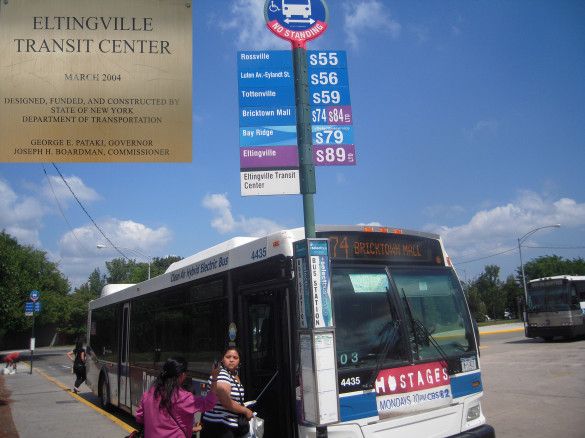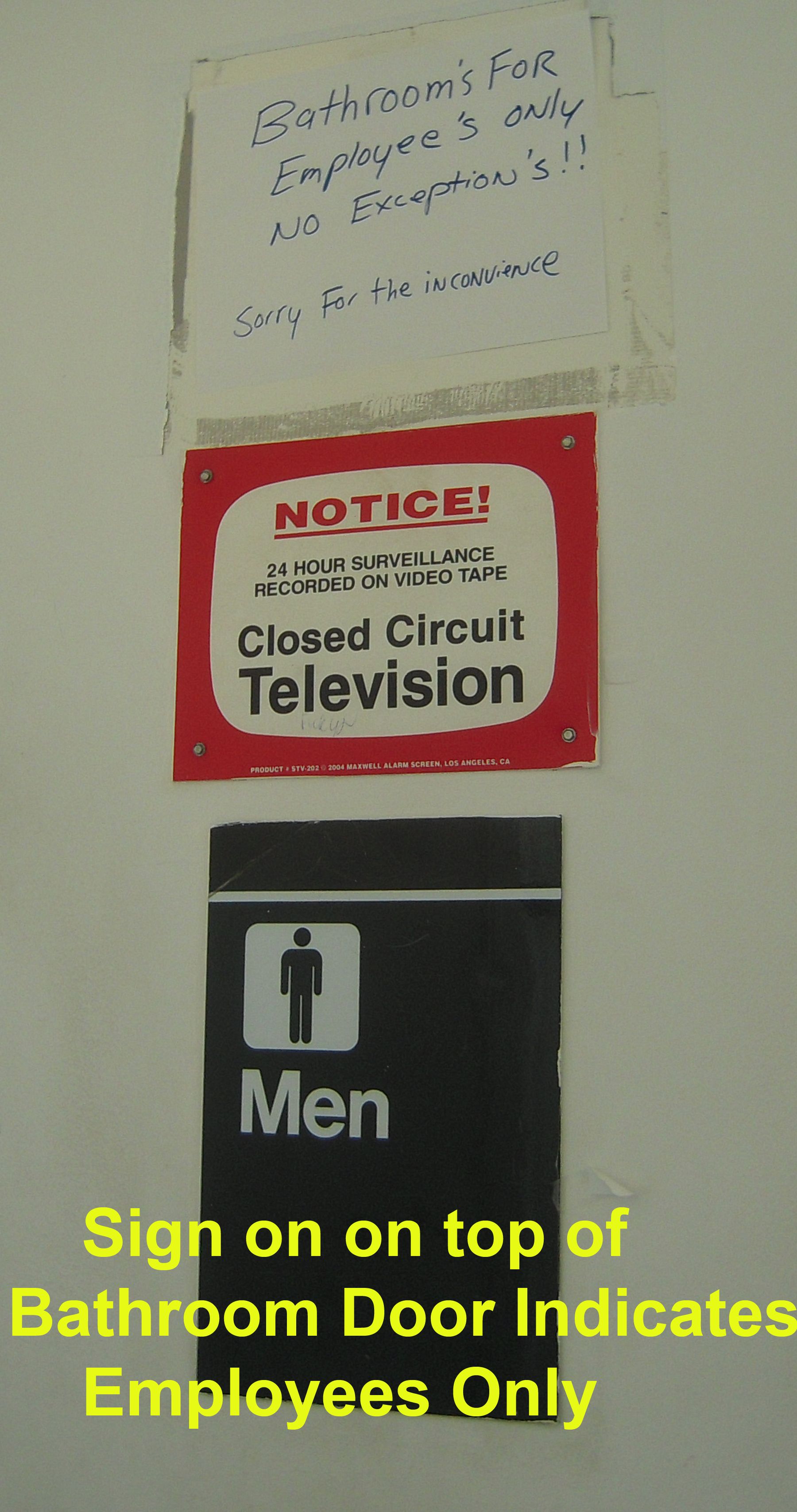Why We Need A Transit Center Near The Brooklyn Army Terminal – Part 2 Of 2

THE COMMUTE: Last week, in Part 1, we started to discuss the Brooklyn Army Terminal as a major transportation hub and I got sidetracked into a discussion about involving the private sector, through the use of vans, to providing legal transit services between major transportation hubs.
I asked why we can’t have legal van operations here, where riders with similar origins and destinations can share rides, since there is not enough demand for regular bus service. Years ago, I was amazed to see all sorts of shared van services at LaGuardia Airport to cities across Connecticut at very reasonable fares. None, however, were available to destinations within the city limit. I attributed this to the influence of the city’s tax industry, which does not want competition.
The Atlantic City Experience
Why can’t we have a greater involvement of private industry in mass transit? Atlantic City has a great jitney system along Pacific Avenue providing quick, efficient and affordable service. Pacific Avenue is a narrow, four-lane street without any parking. No one illegally stops or parks, so the jitneys have a clearly defined lane, although any car can also use the lane.
When I was a kid in the early 1960s, hundreds of 20-passenger jitneys operated at 15- or 30-second intervals during rush hours, providing continuous service. Someone explained to me that each jitney was privately owned and maintained, and that the owners pay the city a fee to operate anytime they want on a prescribed route. The great thing was that standees were never permitted. Drivers would stop and announce the number of seats available. When all seats were filled, no stops were made until someone needed to get off. This resulted in extremely quick and efficient service.
A few weeks ago, I rode on one of these jitneys again, for the first time in about 50 years. There are more routes to serve the casinos, service was not as frequent, and the jitneys only now hold 14 instead of 20 due to federal requirements to accommodate wheelchairs. However, the no standee policy remains in effect, with the drivers still announcing the number of seats available. Drivers know when there is greater demand, so vehicles never operate mostly empty. However, while we were waiting, one lady complained she was waiting a half hour for a jitney to stop that was not filled.
Why couldn’t we have quick, efficient and affordable legal jitney service open to the public? They could utilize our highways to provide travel between Fordham in the Bronx, Flushing in Queens, and the Junction and Sunset Park in Brooklyn, for example? Don’t you think that it could be operated at a profit and many would choose it, were it convenient enough, over driving given the high price of gas? I think so and will also tell you why it is unlikely to ever happen: because the taxi industry and the owners of the new medallion outer-borough taxis will protest that it will harm their business.
As I have previously stated, improving mass transit is only a byproduct of another goal, whether it be making the rich corporations richer or providing an influx of funds into the city’s coffers. The truth is that while we do need yellow and the green cabs, they are just not affordable at $50 or more a trip for individuals making long trips. Virtually no one is advocating for the needs of the mass transit rider.
Back To The Transit Center
In addition to again riding the jitney in Atlantic City, last week I also made my first visit, along with some friends, to the Eltingville Transit Center, partially getting there with the S79, Select Bus Service (SBS). The SBS was quick, but I wondered if it was really needed during middays and how much time it actually saved. I say this because on my midday trip, I rarely saw anyone waiting at any of the non-SBS stops for the local. If you do need one of the local stops, however, you must walk or wait up to 15 minutes to transfer for a local, more than you would save by riding the SBS route. Perhaps, the SBS only makes sense during the peak hours, but I would not expect the MTA to ever admit that if such were the case.
I mentioned last week that the bathrooms at the Eltingville Transit Center were no longer open to the general public. That shows the MTA’s lack of concern for its customers. How do you create a major transportation hub where you want people to park their cars and use mass transit and not provide such a basic amenity? What about all the mass transit facilities across the country that do have bathrooms? Are they never vandalized or is it dealt with? (Correction: The bathroom is a state DOT facility not managed by the MTA. Please see the correction note at the end of this article.)

An instance or two of vandalism should not entitle the MTA to close a restroom forever. As usual, the MTA takes the easy way out, showing that customer service is not a priority for them. Nevertheless, every parking space seemed to be taken during midday, illustrating that the facility is working to keep drivers off the roads. I was really surprised that the parking was free.
Conclusion
A transit center at the Brooklyn Army Terminal is not a priority. The MTA certainly has many more pressing needs. MTA Chairman Tom Prendergast announced a few weeks ago that he is seeking to perform a needed $4 billion upgrade to the subway system’s outdated signal system and was looking toward a higher fare in 2015 to help pay for it. Why is he not pressing Albany for the money? Or has the governor already told him that none would be forthcoming?
Nevertheless, we have to encourage the use of mass transit by making necessary improvements and upgrades and by improving service, whether it is provided by the MTA or someone else. A transit hub at the Brooklyn Army Terminal with ferries; a Tri-boro RX mass transit line; express, limited and local buses; intercity buses, and a private system of jitneys between major transportation hubs are all ways we can encourage people not to use cars and take mass transit instead. Merely providing Select Bus Service along existing routes and a Second Avenue subway, as the MTA is currently proposing, is not a long-range solution to meeting current and future transit needs.
UPDATE / CORRECTION (9/17 @ 12:50 p.m.): Since there is no official sign stating that the bathroom is for employees only, the door was not locked, and one commenter remarked in Part 1 that he used the bathroom recently, I surmised that some MTA employee may have put up that handwritten sign to discourage its use. I stated in my comment that the sign may have been installed without MTA approval.
As it turns out we have heard from the MTA and they stated that the facility is a State DOT facility, and they take no responsibility for it. My apologies to the MTA. But the question remains, who wrote the handwritten sign and does State DOT approve of riders not being allowed to use the bathroom? Any State DOT readers out there?
The Commute is a weekly feature highlighting news and information about the city’s mass transit system and transportation infrastructure. It is written by Allan Rosen, a Manhattan Beach resident and former Director of MTA / NYC Transit Bus Planning (1981).
Disclaimer: The above is an opinion column and may not represent the thoughts or position of Sheepshead Bites. Based upon their expertise in their respective fields, our columnists are responsible for fact-checking their own work, and their submissions are edited only for length, grammar and clarity. If you would like to submit an opinion piece or become a regularly featured contributor, please e-mail nberke [at] sheepsheadbites [dot] com.



